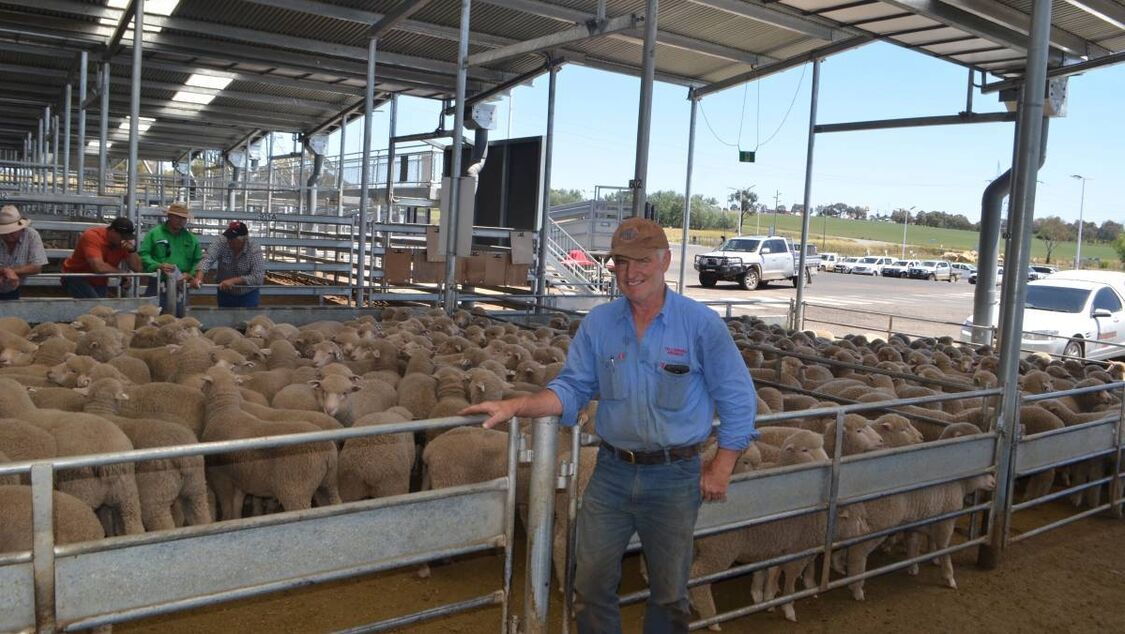YASS sheep producer Frank Kaveney describes using Poll Dorset sires in his Merino operation as both “complementary” and good for “cash flow”.
Mr Kaveney runs Tallawong Merino stud as well as a large-scale commercial operation, and is increasing his return on hectares managed by including Poll Dorsets in his operation.
He runs up to 12,000 Merino ewes on land both owned and leased, and says his operation has to be run on a strict commercial basis to ensure a positive gross margin, especially on the lease country.
“We have to look at the dollars per hectare and we probably outdo the best cropping (farms) in the area, grossing up to $2000/ha,” Mr Kaveney said.
Up to 3000 of those Merino ewes, culled out of the main flock, are joined to Poll Dorset rams to lamb down in July.
Those lambs will be turned off by the end of November, usually sold to finishers through the Yass store market.
“The Poll Dorset over the Merino ewe is a very profitable enterprise and the advantage of selling them as stores is the carrying capacity - I can have that ewe back to one DSE by the summer and autumn, when we are at our lowest capacity, and not worry about fattening lambs,” Mr Kaveney said.
“Country that would have been considered years ago as Merino wether hills, now we super them up (apply fertilizer) and run a breeding ewe in the springtime, whether that is joined to Merino or Poll Dorset.
“From an economic point of view it runs rings around a straight Wether Merino operation, increasing the gross margin per hectare.
“I’m getting ewes in rough hill country to produce a lamb worth $120, which is roughly two fleeces plus costs, but they are almost at the same DSE as wethers.”
Using the Poll Dorset sires compliments the Merino flock on several fronts.
It allows Mr Kaveney to introduce cash flow into the business at a different time of the season.
The second-cross lambs are ready to turn off the ewe in just four months, allowing the operation to utilise a peak pasture growth period to its full potential, and then lowering stocking rates again by the time the feed curve heads in the other direction.
The Poll Dorset lambs sell for a higher value as stores then the Merino lambs, Mr Kaveney says it usually works out to be about $120 for second-cross compared to $80 for Merino lambs of the same age.
“The Poll Dorsets demand a pretty good value as stores and by turning them off it lowers the risk (of the season cutting out) - you are better off taking the money and running,” Mr Kaveney said.
However fattening the Merino wethers and selling them off the following spring does achieve a good return - and by turning off the second-cross lambs early, more Merino weaners can be kept on.
“With the wool off their backs there is more upside in fattening the Merino weaners when they average $110 for carcase and $80 of wool - Merino weaners are undervalued as stores, so the upside on fattening the Poll Dorsets is less then Merinos.”
Mr Kaveney chooses Poll Dorset rams for the second-cross lamb arm of his operation because of their superior carcase shape, and buyer demand.
“I always buy top of the tree Poll Dorset rams and that definitely has benefits - I am strongly against people using budget back of the yard Poll Dorset rams – I’d rather buy something that is guaranteed and if I have to average $1800 for rams, it's worth it,” he said.
Mr Kaveney buys rams on good muscling with narrow shoulders and head, looking for long sires that aren’t too lean.
And he puts good lambing results down to a focus on nutrition and ewe management, keeping them on an even plane of nutrition and ensuring a maximum 3.5 condition score.
With a focus on maintaining a high stocking rate Mr Kaveney said this wasn’t usually a challenge, however with the autumn off to a great start he will be managing his ewes closely for the final trimester.
